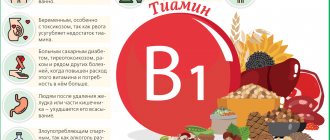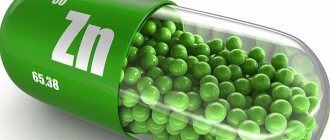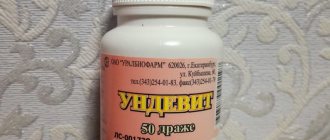Vitamin E, which is also known as tocopherol, takes part in almost all physical and chemical processes in the human body. This substance neutralizes the effects of free radicals and normalizes protein-fat metabolism. With its participation, tissue restoration and cell renewal occur, hemoglobin levels are maintained and blood clotting is regulated.
Tocopherol plays an important role in the proper functioning of the organs of hearing and vision; strengthens blood vessels, prevents the development of atherosclerosis, improves brain nutrition and cellular respiration. It helps maintain the skin in good condition, strengthens the immune system, and ensures the proper functioning of the reproductive system. Tocopherol deficiency poses certain threats to overall health.
Vitamin E content in foods
Vitamin E is found in the following foods:
- in eggs, liver, beef;
- milk and dairy products;
- vegetable oils;
- sunflower seeds;
- almonds and other nuts;
- peanuts, soybeans, other legumes;
- wheat germ;
- cereals and bran;
- apples, rose hips;
- asparagus and Brussels sprouts;
- green leafy vegetables;
- celery stalks.
Vitamin E intake rates are calculated using the formula:
- children under 1 year - 0.5 mg per 1 kg of body weight;
- adults - 0.3 mg/kg.
Breastfed children receive tocopherol in full through breast milk. It is believed that a healthy person receives the required amount of tocopherol with food and does not need to take it additionally.
A deficiency of this substance in the body manifests itself:
- lethargy, anemia;
- dry skin and brittle nails;
- weakening of visual acuity;
- muscle dystrophy, including the heart and diaphragm, impaired motor skills;
- infertility;
- dysfunction, necrosis and fatty degeneration of the liver;
- softening of parts of the brain, primarily the cerebellum.
Diagnosis of tocopherol deficiency
If obvious signs indicating a lack of vitamin E in the body appear, it is necessary to conduct a diagnosis. At the initial appointment, the doctor assesses the condition of the patient’s muscles. He pays attention to their tone and tries to detect signs of progressive dystrophy. Examinations of the digestive organs and thyroid gland are also carried out.
To confirm the problem, prescribe:
- General blood analysis.
- Liver tests.
An x-ray of the diaphragm is required. With a deficiency of vitamin E, necrotic changes occur on the muscle-tendon septum, which separates the thoracic and abdominal cavities of the body.
Recommendations for taking vitamin E
The drug is taken after meals. The average daily dose is 400–600 IU per day. Start taking the minimum dosage and gradually increase it. The course of treatment is 1–2 months. For pregnant women at risk of miscarriage, the treatment regimen is selected individually.
Taking vitamin E may cause side effects, including:
- allergic reactions;
- diarrhea;
- pain in the epigastric region;
- increased blood pressure;
- increased blood cholesterol levels;
- reducing the need for insulin in diabetics.
Vitamin E is taken under strict medical supervision:
- with an increased risk of thromboembolism;
- myocardial infarction;
- pronounced cardiosclerosis.
Medical Internet conferences
There are many different biologically active substances in the human body; vitamins are one of these groups. They participate in biochemical processes in cells, tissues and organs, affect the physical and formative functions of the body, and regulate immunity. In this work, I would like to pay special attention to such vitamins as E and K; in this regard, the purpose of our article is to study the properties of these vitamins and their use in clinical practice.
The first information about vitamin E (tocopherol) appeared at the beginning of the 19th century, thanks to the scientists of the Shute brothers, who conducted a series of experiments on white rats. As a result of this experiment, they obtained data that rats raised only on whole milk did not lag behind in development, but their reproductive function suffered. Researchers have proven that the missing factor is found in green leaves and wheat germ. Later, in 1922, fat-soluble vitamin E was discovered by American scientists, anatomist Herbert Evans and Scott Bishop.
In nature, tocopherol exists in eight different forms (isomers), which differ in biological activity and functions in the body. A person can get vitamin E by eating foods such as milk, eggs, greens, butter and vegetable oil, sea buckthorn, spinach, broccoli, liver and meat, bran and whole grains. The daily dose varies depending on age and gender, so infants up to 6 months are recommended up to 3 mg per day, from 7 to 12 months - 4 mg, children from 1 to 3 years - 6 mg, from 4-10 years - 7 mg, men 11 years and older – 10 mg, women 11 years and older – 8 mg. Also, during pregnancy and breastfeeding, women need an increased dose of vitamin E - 10-12 mg.
Tocopherol has many positive properties. Its antioxidant effect plays an important role. Vitamin E is capable of destroying free radicals, which have an adverse effect on the cells of the human body, which can threaten the development of serious diseases of the cardiovascular system and malignant neoplasms. Based on this, we can conclude that the optimal daily dose of tocopherol serves as prevention in the development of these pathological conditions.
Vitamin E is also necessary during pregnancy, as it improves muscle tone, prevents cramps, and prevents the appearance of stretch marks on the skin of the abdomen. Participates in the synthesis of the hormones of the reproductive system, progesterone and estrogens, necessary for the proper maturation and fertilization of the egg, consolidation of the embryo, and formation of the placenta. Tocopherol is important in the early stages of pregnancy, preventing miscarriage and reducing the risk of thrombosis. Vitamin E has a beneficial effect on the formation of the cardiovascular and respiratory systems of the fetus and regulates the process of lactation in a woman’s body after the birth of a child. It is worth noting that tocopherol slows down the aging process and improves cell nutrition, strengthens the immune system in the fight against viral and bacterial infections, improves blood circulation and the regenerative properties of the body.
Signs of deficiency or excess of vitamin E in the human body have not been experimentally recorded. There are only some results from experiments with animals. It has been established that tocopherol deficiency in females leads to spontaneous abortion, in males the testes are affected, cases of myocardial dystrophy, skeletal muscles and changes in the central nervous system and thyroid function have also been identified.
In medical practice, tocopherol (a solution of tocopherol acetate in oil, vitamin E concentrate) is indicated for conditions such as spontaneous abortion, menopause, muscular dystrophy, rheumatoid arthritis, and peripheral vascular damage. It is worth noting that it is preferable to use vitamin E as a combination therapy, most often in combination with hormonal drugs, sometimes along with magnesia and drugs that increase appetite.
The history of vitamin K begins in 1929. A Danish research scientist conducted a series of experiments regarding the effects of low cholesterol in chickens. Birds in the study developed hemorrhages in the subcutaneous tissue, muscles and other tissues. Feeding them with purified cholesterol did not eliminate the pathological manifestations. It was discovered that plant products containing substances that promote blood clotting have a healing effect. These substances were called vitamin K, since the first information was described in a German journal, where they were designated “coagulation vitamins.” In 1939, Karrer isolated vitamin K 1 from alfalfa, calling it phylloquinone, and the Americans Binkley and Doisy obtained a substance that also promotes blood clotting from rotting fishmeal. This factor was called vitamin K 2 (menaquinone).
Vitamin K is a yellowish liquid and belongs to the group of hydrophobic vitamins. It combines a number of 2-methyl-1,4-naphthoquinone derivatives. Currently, there are three types of naphthoquinone: vitamin K1 (phylloquinone), K2 (menaquinone) and K3 (menadione). Vitamin K1 enters the body from the outside and is found in plant foods. Vitamin K2 is synthesized in the intestines of the macroorganism due to the activity of bacteria. Vitamin K3 is synthesized artificially. Naphthoquinone plays an important role in the human body, ensures the formation of blood clotting factors, protein C and protein S, and is involved in the synthesis of osteocalcin, necessary for bone tissue. Adults need 120 mcg/day of this substance. Vitamin K is found in many plant foods (spinach, cereals, avocados, bananas, green tomatoes, all types of cabbage, rose hips. It is also found in soybean and olive oil, walnuts, milk, fish oil, eggs and pork liver).
With vitamin K deficiency, hemorrhagic syndrome develops. Bleeding gums, various hemorrhages, bleeding are noted. The reasons for a lack of vitamin K can be, for example, liver disease, the use of anticoagulants, and irrational use of antibiotics that have a detrimental effect on the intestinal flora.
An excess of vitamin K practically never occurs, because even in large doses it is not toxic (it can increase blood clotting).
The use of vitamin K group drugs plays an important role in clinical practice. Bleeding and hemorrhagic syndrome are the main indications for prescribing this substance, also indications include hepatitis, cirrhosis of the liver, peptic ulcer of the stomach and duodenum. One cannot do without its use during preparation for operations and in the postoperative period.
Vitamins are vital organic components that are needed by humans in minute quantities, but are important for growth, development and normal functioning. These substances are also used in clinical practice, since any disease is a test for the body that requires the mobilization of defenses, increased consumption of biologically active substances, including vitamins, which clinicians successfully use both as a preventive measure and for the treatment of certain diseases, for example, vitamin E for spontaneous abortions, muscular dystrophy, rheumatoid arthritis, vitamin K for hemorrhagic syndrome.
What else is prescribed with this study?
Biochemistry 8 indicators
27.113. Ven. blood 1 day
990 ₽ Add to cart
Vitamin C
4.17. Ven. blood 7 days
2,090 ₽ Add to cart
Clinical blood test with leukocyte count and ESR (with microscopy of a blood smear to detect pathological changes) (venous blood)
3.9.1. Ven. blood 1 day
480 ₽ Add to cart
Complex blood test for vitamins (Vitamins A, D, E, K, C, B1, B5, B6)
4.26.1 Ven. blood 7 days
15 220 ₽ Add to cart
Self-diagnosis. How to suspect you have a vitamin deficiency?
Murzaeva Irina Yurievna
Endocrinologist, Preventive Medicine Doctor
April 3, 2019
In spring, like no other time of the year, we especially notice changes in our appearance and often not for the better. The reason for this, as a rule, is hypovitaminosis. By looking at the skin and its so-called “appendages”: hair, nails, eyebrows, you can perfectly determine the lack of a particular vitamin or microelement. And so, I carry out the most pathognotomonic symptoms for a lack of one or another vitamin. (in medicine, this is the name for symptoms clearly describe a certain disease and are a sign for making a specific diagnosis) As many people hate at the beginning of the swimming season - cellulite or lipedema (it can be characterized as stagnation - a violation of microcirculation and lymphatic drainage in adipose tissue, leading to its degeneration ), but as it turned out, everything is simple - the cause of this condition is a banal iodine deficiency , common in more than 100% of the Russian population. Recurrent atheromas (“wen”;)) are also an indicator of iodine deficiency, but the point is that this is treated not with banal doses of 200 mcg of Iodomarin, but with doses exceeding 500 mcg of Iodine! Only then will the therapeutic effect be noticeable. Fibrocystic mastopathy, so often diagnosed in women, is often well treated by selecting adequate doses of iodine. I couldn’t ignore this complex condition (read only for men! and their treating urologists) - Peyronie’s disease - in 30-40% of cases it can be cured with adequate doses of iodine. White spots on the nails are often a zinc deficiency. A lack of zinc can be easily suspected from a blood test - ALP (alkaline phosphatase) will be persistently reduced in a biochemical blood test. Zinc deficiency explains the decreased sense of smell and taste! (reduced ability to sense sweet, sour, bitter, salty, etc.). Which leads to decreased feelings of satiety and overeating!! Weakness in the first half of the day (this is an important symptom of thyroid dysfunction) and, above all, selenium deficiency. Selenium and Iodine are two “partners” that should be used together for the treatment of thyroid gland. And not in all cases, AIT is a contraindication to iodine administration. A phrase like “You have AIT and you can’t take iodine” is a thing of the past. Impaired skin pigmentation - depigmentation, early gray hair - deficiency of such a little-used element as copper. But copper is also a powerful immunomodulator; if there is a lack of it in a clinical blood test, persistent neutropenia (a drop in the level of neutrophils) can be observed, which is more often observed in children. Photosensitivity, especially on a sunny day, sarcopenia (muscle dystrophy, well defined by bioimpedance) is a lack of vitamin E. Migraines, a difficult diagnosis, debilitating headaches - imagine, can develop as a result of a lack of vitamin B2 (riboflavin), can be treated with large doses 100 mg per day of injectable riboflavin (not included in the usual Milgamma, injected only with a separate injection). Seborrheic dermatitis, cracked lips, peeling skin of the nostrils, red and swollen tongue are often also a sign of riboflavin deficiency. Numbness and tingling of the toes and hands, radiation reserve syndrome, pain along the “course of nerves” and PMS (premenstrual syndrome:)) are most often a consequence of a lack of vitamin B6 (pyridoxal-5-phosphate), but it accumulates poorly in the body, with under stress it quickly “burns out”; taking it during prolonged stress can be permanent. As well as the next element……. Aggressiveness, uncontrollable anger - in Russia everyone must be given MAGNESIUM , just as they used to give free milk in hazardous industries. Bleeding gums, “age spots”, petechiae (small hemorrhages) with a minimal mechanism of injury - vitamin C deficiency. And a dose of 500 mcg will not help here, doses of more than 1.5 g per day are needed, yes, so large, there are diseases for which doses of 4-5 grams of vitamin C will be “just right” :). Now about my dearly beloved and undeservedly forgotten vitamin A. There are many vitamin A deficiencies and they are poorly diagnosed! Heals quickly! Follicular keratosis , a change in the structure of the skin of the arms and legs, which is usually regarded as hereditary, that is, “goose or chicken-type” skin with papules and peeling is nothing more than a genetic lack of vitamin A! Dry and rough skin, dry eyes, decreased twilight vision, cracked and dry tongue, decreased immunity, dry intimate areas, tendency to gopothyroidism! (in the thyroid gland there are structures that work on vitamin A!!!) - all this is vitamin A deficiency!!! Therefore, I really like to make mixed drops for the prevention of hypovitaminosis A and D3 (especially for children). You need to take 3 drops of retinol acetate 3.44% and 3 drops of vitamin D3 in the morning under the tongue or on bread. Even persistent acne (acne) is treated with drugs based on high doses of retinol (vitamin A). Split ends!!!, diffuse hair loss - look for iron deficiency. Seeing these signs in yourself, you can adequately, together with the doctor, select “working” doses of vitamins. And there is no need to join the crowd of skeptics who are sure that we will get vitamins from food and at sea; taking vitamins in tablets is not necessary. "Blessed is he who believes." I believe in modern medicine. Dedicated to skeptics: it is also possible a laboratory that you have a deficiency of vitamins and microelements, vitamins can be donated by blood - vitamins A, D, vitamins B, but I would prefer to check microelements using a spectral analysis of hair, a blood test in this case is not very reliable. (Believe me, I have studied this issue a lot and I am sure that it is more reliable to check microelements in the hair!). Those who test a genetic predisposition to the absorption of this or sometimes a vitamin have gone even further, but this is “already the aerobatics” of medicine and this service is not available in many cities in Russia. And its cost is not routine.
Therefore, we will trust traditional research methods - clinical examination and history taking. 
Vitamin D
Vitamin D is the most “controversial”, since often in studies and meta-analyses scientists present conflicting conclusions about the benefits or even uselessness of a synthetic vitamin.
Vitamin D is a prohormone that is involved in various biochemical processes in the body. It is necessary for the normal function of the immune system, the prevention of cardiovascular and autoimmune diseases, and is an oncoprotector.
There are vitamin D2 and D3. The first form of the vitamin is found in food, and the second is formed in the skin from D2 under the influence of sunlight.
Global statistics show that about 70% of the world's population suffer from vitamin deficiency - mainly in northern countries. Its deficiency is clearly manifested externally - problems with skin, hair, nails and, of course, mood. Vitamin D deficiency is associated with a high risk of developing depression and anxiety.
An excess of the vitamin is difficult to achieve for Russian residents, so doctors often recommend taking a synthetic vitamin throughout the year for adults and children. You should consult a specialist about dosages.
How can you find out how your COMT gene works?
You can monitor the dynamics and characteristics of your genes only in a clinic equipped with the latest technology.
Specialists are also important: truly competent oncologists and geneticists will conduct a full examination of your body and study the peculiarities of the functioning of your genes.
Both of these qualities are brought together by the oncology department - a place where they closely follow all the news from the world of medicine and do everything possible to return their patients to good health and good mood.
Vitamin B9 or folic acid
This vitamin is usually prescribed in tandem with B12 for a synergistic effect. Folic acid is also necessary for the immune and circulatory systems, is involved in the formation of new cells, and is needed for healthy metabolism.
The deficiency is manifested by neurological symptoms - anxiety, aggression, increased feelings of fear, and also contributes to the risk of developing panic attacks and depression. Against the background of excess, aggression and increased excitability also persist, and symptoms of digestive disorders appear.
Pregnant women and young mothers need additional B9 supplementation for a long time. Other people, as well as pregnant women, should be monitored and recommended by a specialist.









